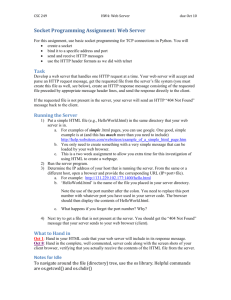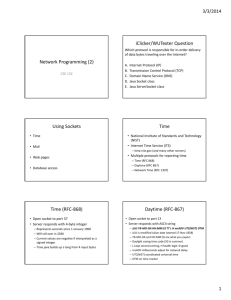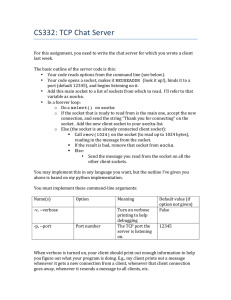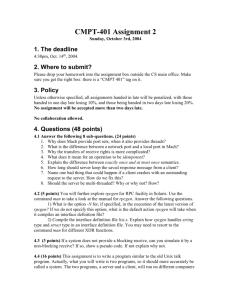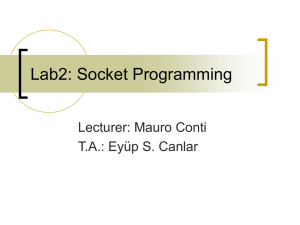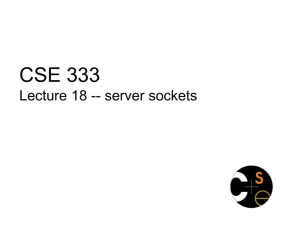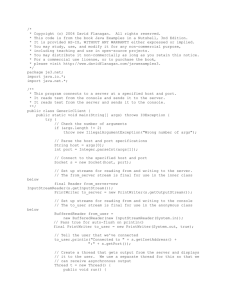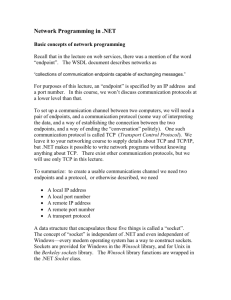Web Server
advertisement
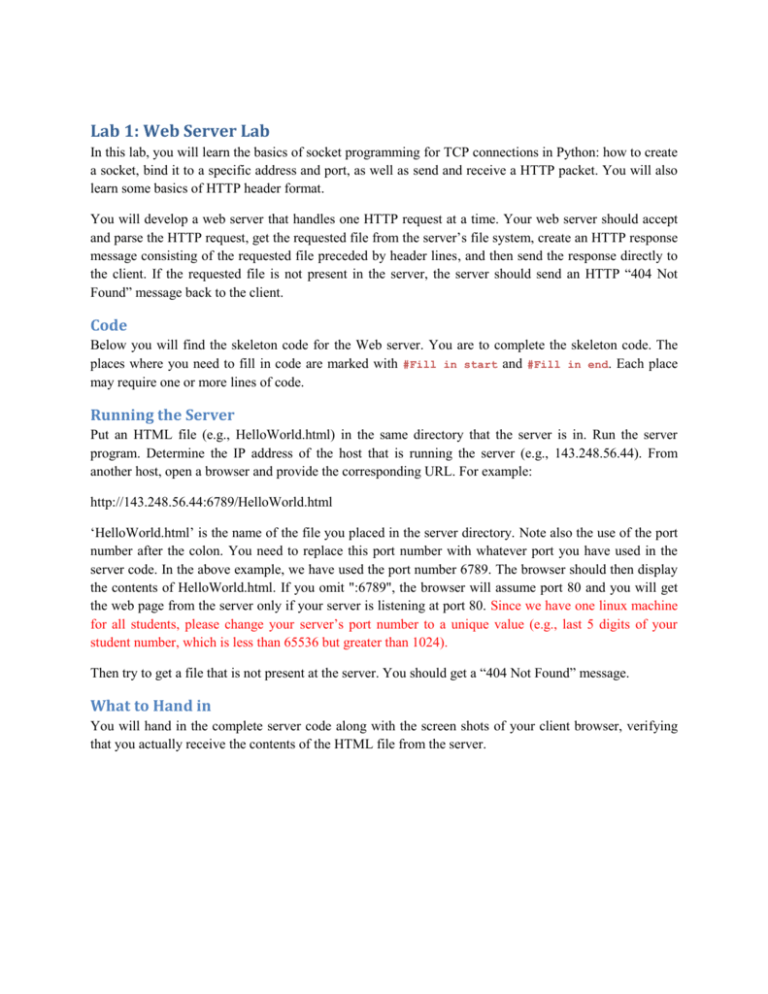
Lab 1: Web Server Lab In this lab, you will learn the basics of socket programming for TCP connections in Python: how to create a socket, bind it to a specific address and port, as well as send and receive a HTTP packet. You will also learn some basics of HTTP header format. You will develop a web server that handles one HTTP request at a time. Your web server should accept and parse the HTTP request, get the requested file from the server’s file system, create an HTTP response message consisting of the requested file preceded by header lines, and then send the response directly to the client. If the requested file is not present in the server, the server should send an HTTP “404 Not Found” message back to the client. Code Below you will find the skeleton code for the Web server. You are to complete the skeleton code. The places where you need to fill in code are marked with #Fill in start and #Fill in end. Each place may require one or more lines of code. Running the Server Put an HTML file (e.g., HelloWorld.html) in the same directory that the server is in. Run the server program. Determine the IP address of the host that is running the server (e.g., 143.248.56.44). From another host, open a browser and provide the corresponding URL. For example: http://143.248.56.44:6789/HelloWorld.html ‘HelloWorld.html’ is the name of the file you placed in the server directory. Note also the use of the port number after the colon. You need to replace this port number with whatever port you have used in the server code. In the above example, we have used the port number 6789. The browser should then display the contents of HelloWorld.html. If you omit ":6789", the browser will assume port 80 and you will get the web page from the server only if your server is listening at port 80. Since we have one linux machine for all students, please change your server’s port number to a unique value (e.g., last 5 digits of your student number, which is less than 65536 but greater than 1024). Then try to get a file that is not present at the server. You should get a “404 Not Found” message. What to Hand in You will hand in the complete server code along with the screen shots of your client browser, verifying that you actually receive the contents of the HTML file from the server. Skeleton Python Code for the Web Server #import socket module from socket import * serverSocket = socket(AF_INET, SOCK_STREAM) #Prepare a sever socket #Fill in start #Fill in end while True: #Establish the connection print 'Ready to serve...' connectionSocket, addr = #Fill in start #Fill in end try: message = #Fill in start #Fill in end filename = message.split()[1] f = open(filename[1:]) outputdata = #Fill in start #Fill in end #Send one HTTP header line into socket #Fill in start #Fill in end #Send the content of the requested file to the client for i in range(0, len(outputdata)): connectionSocket.send(outputdata[i]) connectionSocket.close() except IOError: #Send response message for file not found #Fill in start #Fill in end #Close client socket #Fill in start #Fill in end serverSocket.close() Bonus 1. Instead of using a browser, write your own HTTP client to test your server. Your client will connect to the server using a TCP connection, send an HTTP request to the server, and display the server response as an output. You can assume that the HTTP request sent is a GET method. The client should take command line arguments specifying the server IP address or host name, the port at which the server is listening, and the path at which the requested object is stored at the server. The following is an input command format to run the client. client.py server_host server_port filename
